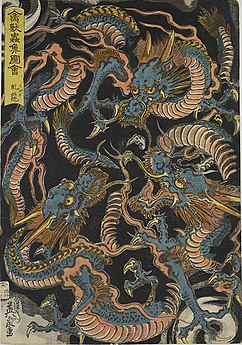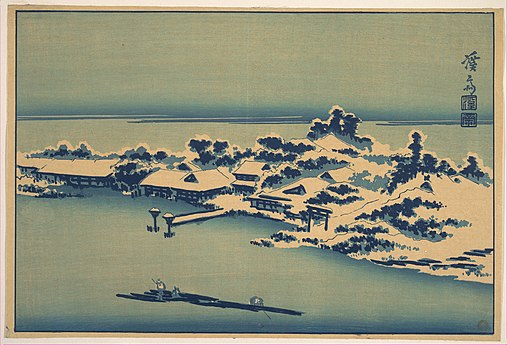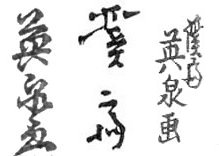Keisai Eisen

Keisai Eisen (渓斎 英泉, 1790–1848) was a Japanese ukiyo-e artist who specialised in bijin-ga (pictures of beautiful women). His best works, including his ōkubi-e ("large head pictures"), are considered to be masterpieces of the "decadent" Bunsei Era (1818–1830). He was also known as Ikeda Eisen, and wrote under the name of Ippitsuan.
Biography[]
Eisen was born in Edo into the Ikeda family, the son of a noted calligrapher. He was apprenticed to , from whom he took the name Keisai, and after the death of his father he studied under . His initial works reflected the influence of his mentor, but he soon developed his own style.
He produced a number of surimono (prints that were privately issued), erotic prints, and landscapes, including The Sixty-nine Stations of the Kiso Kaidō, which he started and which was completed by Hiroshige. Eisen is most renowned for his bijin-ga (pictures of beautiful women) which portrayed the subjects as more worldly than those depicted by earlier artists, replacing their grace and elegance with a less studied sensuality. He produced many portraits and full-length studies depicting the fashions of the time.
In addition to producing a prolific number of prints, he was a writer, producing biographies of the Forty-seven Ronin and several books, including a continuation of the (History of Prints of the Floating World), a book which documented the lives of the ukiyo-e artists. His supplement is known as "Notes of a Nameless Old Man." He describes himself as a dissolute hard-drinker and claims to have been the owner of a brothel in Nezu in the 1830s which had burned down.
Gallery[]

Courtesan, c. 1808

Water dragon, c. 1830–48

Winter landscape

Signatures of Keisai Eisen reading from left to right: "Eisen ga" (英泉 画), "Keisai" (渓斎), and "Keisai Eisen ga" (渓斎 英泉 画)
External links[]
- Keisai Eisen by Honolulu Museum of Art
References[]
- Dan McKee. "Keisai Eisen". Retrieved 30 November 2006.
- John Fiorillo (1999). "Keisai Eisen". Archived from the original on 31 January 2008. Retrieved 30 November 2006.
- Rasch, Carsten: Keisai Eisen, Berlin 2015.
| Wikimedia Commons has media related to Keisai Eisen. |
- 1790 births
- 1848 deaths
- Ukiyo-e artists



